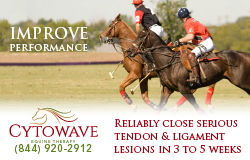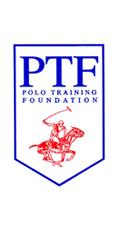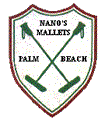Graymar Farm takes a nurturing approach, using tops stallions and broodmares, to produce quality polo ponies with plenty of talent and stamina to hold up under the best players in the sport.
Polo pony breeding has evolved over the past 15 years with more professional players making it part of their operation. Prior to that, most players in the U.S. searched racetracks for young off-thetrack Thoroughbreds they could train for the sport. In some cases retraining racehorses can be more cost efficient than breeding.
The best breeding ages are often also the best playing ages. So, breeding takes them away from the game. There is also always the chance of complications during the pregnancy or birth, putting these best playing mares at risk.
But even when everything goes perfectly, you have to wait several years for the foal to mature before polo training can begin and even more time before you know if the young horse has the talent to be a good polo pony. If your lucky, the horse won’t have any injuries during that time. For the ones that don’t make it, you’ve put nearly five years of time and expense into them, all for naught.
When embryo transfer became widely available, it solved part of the problem. Instead of the mare carrying the foal to full term, very early on the embryo is flushed from the mare and transfered to a recipient mare to carry. It also allowed for multiple embryos to be transfered from the same mare in a year. All the while, the original mare could continue to play.
Now, cloning is making headlines. Cloning can be done from horses of either sex and basically involves taking DNA via a tissue biopsy from a horse, sending it to a lab where it is inserted into an egg that has been stripped of its DNA, essentially tricking it into believing it is fertilized, growing the embryo and finally transfering it to a recipient mare to carry. The cost to clone started at $150,000 per horse and is now down to $85,000. Because environmental factors, training and life experience all play a part in what the horse becomes, there is no guarantee it will turn our like the original.
Graymar Farms is taking a different approach to creating the sport’s talented horses.
__________________________________
Wesley “Whistle” Uys grew up on a big cattle farm in South Africa. He was on a horse from the time he was three, riding around the farm. His dad played polo so by the time Uys was 12 he picked up a mallet. The family had a big Brahman stud on the farm and Uys enjoyed watching the development of the cattle and how to cross them. They also did a small amount of horse breeding for themselves.
When Uys was 4, 10-goal Tommy Wayman, came to South Africa and met Uys’ dad. His dad told Wayman that when his son was old enough, he was going to send him to the states to work for him. Wayman agreed and when Uys was 18, he headed to San Antonio, Texas. He worked for Wayman for five years, until Robert Lipman offered him a job. He has worked for Lipman ever since.
The two played polo together until Lipman decided to quit playing, but he didn’t want to completely get out of the sport. So, they decided to get into the polo horse business.
At first, Lipman and Uys were buying young horses and finishing them for polo. Every summer for years they would go to Wyoming. One summer Adam Snow came up and was trying horses in a 14-goal practice Uys was playing in. Snow was on some horses Mike Morton was selling.
“He was flying. He was stopping. He was playing ice hockey on one mare ... going here and there ... I’m like, What? They don’t do that for Mike. And [Adam] was like, ‘Yeah, I know, but they have it.’ “I was besotted. Just like, I’ve got to see this guy,” remembered Uys. So, Uys went to Morton’s barn to see how he trained the horses. “His schedule was easy. In the spring, he’d take 10 horses, work them, use them for branding [cattle] and knock the edge off. Then he’d hire a girl for a few months to ride each of them for about 20 minutes. He’d tell her to go ride them up the hill. Then he’d play them. The days they played, they didn’t get ridden. And he’d play them in snaffles. After three months of that [they were ready].”
Morton told Uys that if the young horses needed a lot more work and had to be ridden down he wouldn’t breed those mares anymore. “Pretty much what he bred worked ... and that’s a guy who is breeding in Wyoming, getting three months of polo a year and didn’t have access to the best mares,” Uys explained. He wasn’t sold on breeding polo ponies until he met Morton.
Over the years, Uys and Lipman bought about a dozen horses from Morton. “I loved the product he was putting out. Mike was breeding good stallions and good mares. He is a very good horseman, good rider and was producing [good horses],” said Uys.
“Mike had sold enough horses to the high-goal, to Adam Snow, to Owen Rinehart, to a bunch of people. And then we came and bought a bunch from him, from Tennessee, just as young horses and ... they worked out so well, so we said, let’s get that stallion.
"When he decided to slow down on his breeding, I asked him if I could buy his stallion. He said no, but a year later, he sold us the stallion,” Uys said.
The stallion was Reds Lazarus. And Uys had also purchased a 2-year-old from Morton called Reds Isaac. “I think it was one of the best lines he ever produced. I played a full sister of his and she was phenomenal. He was amazing, played great. We used him as a stallion and ended up with seven full brothers and sisters. They are great, they all play polo and Isaac, the youngest, his babies are phenomenal,” said Uys.
__________________________________
Uys isn’t looking to breed just your average polo horse, he only wants the best, using the best stallions and mares, and only wants them to go to the best players.
“That is what my aim was, to breed horses that played at least the U.S. Open ... or the Argentine Open, not the 20- goal,” he said. “I think its coming around. Sapo [Caset] bought one this year, Facundo [Pieres] bought one a year ago that he plays, I think she is one of his best mares. [Adolfo] Cambiaso bought one, Juan Martin Nero bought one, Mariano Aguerre, Tonkawa ... Our homebreds stand out and that was the aim.”
Uys says that about 70 percent of the horses they have bred are top-caliber horses. “Los Machitos is cloning one mare in Argentina just to keep her as a broodmare. We’ve got her full sister and she is not even our best broodmare,” he said.
Lipman’s Graymar Farms, encompassing 275 acres, is located in Franklin, Tennessee. The farm has four polo fields, lush green pastures and is home to over 90 horses. General Manager Bob Connors and Uys lead the breeding program. Uys brings about 30 horses to Port Mayaca Polo Club in Okeechobee, Florida during the winter high-goal season to work and play until they are ready to be sold.
Uys says the breeding operation is small and boutique, but high quality. This allows them to spend a lot of time nurturing the young horses. They do a limited amount of breeding using embryo transfer, only about three a year. They understand that embryo babies often require extra handling so they keep it manageable.
“Our motto is if the brain isn’t there, if its not willing to be with you, we don’t want to breed that mare anymore,” said Uys. “You run into those problems when you do embryos because embryo mares run in a big herd. They are run into corrals and chutes to get their shots or get branded so every time they are handled, it is chaos. The don’t want to be around people. They learn to fight and peck in the herd so the babies get raised with a different character.
“That is why we kept it kind of small. If a mare cribs or doesn’t like to be caught, we can bring those in and spend more time with them so they are more accepting. If they want to run away from you when they are young, it never leaves them. We get a horse used to us a much as we can so when we go to get on its back, it is not something foreign to the animal. They just have to learn to bear the weight on its back.”
Graymar works with the recipient mares before the foals are born and turns them out with some other mares so when they hear the chain rattle at the gate, they don’t run but will walk with the other mares to the gate with their babies.
Uys explains, “If we were doing that with 20 recipient mares a year, that is a lot of work. But three or four, you can get them where they want to be with you. With large numbers, you put too much quality into quantity. Let’s say you’ve got a herd of 25, and you can only catch two of those, you’ve got a problem. You go out to put a halter on a broodmare and the whole herd takes off running, you’ve just created wild horses. You’ve bred very expensive, good quality, wild horses.”
__________________________________
The training begins as soon as a foal is born, imprinting them and touching them everywhere. Uys says by two weeks they are leading and can be tied up. After that they are turned out for several months.
“If you go over that, you create problems. They are babies and can’t take in as much as we want to give. Everything is new to them so it has to be done carefully. And too much of a good thing can become a bad thing,” said Uys. In turn-out, they get rubbed on and have halters put on them. “Essentially we go to their house to work with them,” explained Uys. “We go to where they are comfortable. If [one is being difficult] we bring it in along with the mother to work with it. ... I’m always looking for that release and connection ... horse training is psychology. We want them to retain what we are teaching them.”
When they are ready to be started under saddle, they go to CJ and Sheila Lequerica’s Vintage Polo Ponies in Sealy, Texas. They go just as they are turning 3, and come back as they are turning 5. Work is alternated with turnout during that time. Uys admires the Lequerica’s operation and visits once or twice a year to check on the young horses’ progress.
“[Others] have butchered a lot with breeding. At Graymar, we don’t want to do that. I’d like to see this program still going in 20 years,” explained Uys. “[Hopefully], it can continue to grow and produce better horses than it did the year before. Every foal that hits the ground, by the time you put a saddle on it, it needs to ride better than the mother did.”
Uys pointed out that many of the Thoroughbreds you see today have some of the same blood lines, like Mr. Prospector and Northern Dancer, on both sides. “These horses are pretty much running into the ground. They are a little bit smaller, which I love, but they don’t last. Their feet are terrible and the cartilage is getting thinner in the joints, which is a big deal.
“They have been bred to perform for no more than a year and then they are broken down. Or they’ve been injected so much, some stupid polo guy gets it for six months and just when he gets it going well and he wants to sell it, it doesn’t pass the vet,” said Uys. “None of our mares and stallions [bloodlines] touch anywhere. It’s a unique thing. Mike Morton had that blood out there. Orrin Ingram gave us some, Tommy [Wayman] gave us some and none of them are similar.”
Uys also said cloning won’t work for Graymar’s model. “I don’t think cloning will be the best thing for Graymar’s operation or any breeding operation that wants each generation to be better than the [one before it].”
Graymar has also made sure their horses have stamina. “I would not breed a mare that could only play a half chukker, or gets strong at the end of a chukker,” said Uys. Graymar’s young horses play full chukkers three times a week. “It is good to have horses with stamina and lungs. They’ve got to have the agility, but they must be able to move a full chukker,” he said. “I believe changing [mid-chukker] is good, I just don’t believe playing a horse you have to change is good.”
By the time a horse is between 6 and 8 years old, Uys expects it to go left and right effortlessly and stop easily.
“By far [polo ponies] are the most unique equine athlete ever. The problem is, horses are too expensive. But, if you think about it and look at it in a collective way, a polo pony should be the most expensive horse in the world ...” said Uys.
“Average jumpers sell for a half million dollars, but the difference is you have to take 10 polo ponies to the field. It’s very difficult to take $10 million worth of horses to the field when you are playing for a prize,” explained Uys.
__________________________________
Graymar currently has seven stallions, some that play competitively, and a total of about 14 broodmares—four in Texas, two in Wyoming and eight in Tennessee. They generally produce six to 12 foals a year.
This year, only the broodmares in Texas and Wyoming are in foal. “[Those] are kind of like a satellite breeding program. We say who we want them bred to, send the semen and they breed them. We get first option on the babies,” explained Uys. “The farm is not big enough to hold so many broodmares.”
Uys doesn’t believe a polo pony reaches its peak until its 8, and he prefers to sell them at that age. The mare Graymar sold last year to Facundo Pieres, O’Lace, was from the first group of five horses they bred. All five were top horses. Cicada is 9 years old this year and playing high goal.
“When I sell a horse at 6, I’m telling you it is a top horse. The only thing you can do to mess up the horse is to overplay it and get it sore. ... When you sell them at 5 or 6 you are selling hope and I hate to sell hope. It’s a great business tool, but if hope doesn’t work out, then it’s my name and Graymar’s name. I want them to work out,” said Uys.
Uys hopes the success Graymar has seen selling to some of the top pros in the sport will continue and that those horses will do the marketing for them. “In five years, I’d like to see Graymar doing most of its business over the phone with existing clients, repeat customers,” explained Uys. “When you get repeat customers, you’ve created something because they are obviously super happy with the product, and that is what we are trying to do.”
-- By Gwen Rizzo
|









